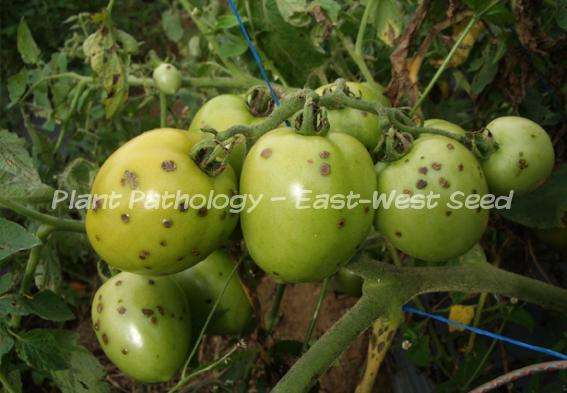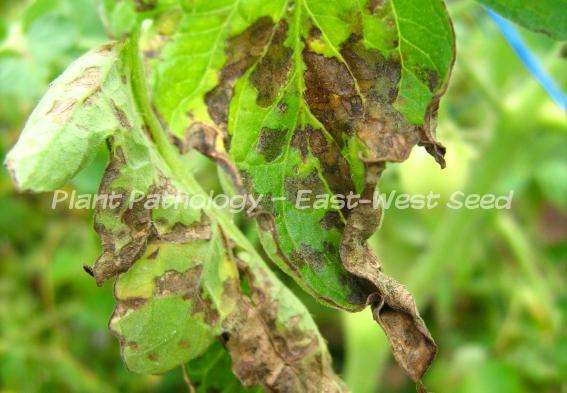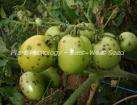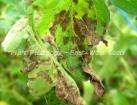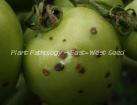Causal Agent:
Bacteria (Xanthomonas spp.)
| Characteristic Symptoms: | |
 |
Leaf lesions are angular to irregular, dark brown and water-soaked spots. |
 |
Affected leaves may turn yellow and fall off. |
 |
Under high humidity conditions, numerous lesions coalesce giving the plant a blighted appearance. |
 |
On immature tomato fruit, small black specks are formed which may enlarge to become brown, slightly sunken, scabby spots and are sometimes surrounded by a green halo. |
| Conditions for Disease Development: | |
 |
The pathogen is seed-borne and is capable of overwintering on plant debris in the soil and on volunteer host plants in abandoned fields. |
 |
Bacteria invade the plant through stomata on the leaf surfaces and through wounds on the leaves and fruit caused by abrasion from sand particles and/or wind
|
 |
Temperatures between 24-30°C and prolonged periods of high relative humidity favour infection and disease development. |
 |
The bacteria is spread by windblown rain, overhead irrigation, drainage of infested water, by mechanical means (handling of infected seedlings, on contaminated tools) and by workers (on hands, clothing).
|
| Management and Control: | |
 |
Use pathogen-free seeds or seedlings as the disease is difficult to control once introduced in the field.
|
 |
Avoid working in affected areas when leaves are wet to minimize spread. Disinfect tools (10% chlorox) after working in infested area.
|
 |
Avoid overhead irrigation. Rain shelters in seedbeds may help reduce rain splash and disease severity.
|
 |
Practice 2-3 years rotation with non-host crops.
|
 |
Apply copper or copper+mancozeb sprays on dry seedlings prior to transplanting and continue at 5 days interval.
|
| References: | |
| AVRDC Publication 05-638. 2005; Sun, et. Al. 2002. Bacterial Spot of Tomato and Pepper (http://www.freshfromflorida.com/pi/enpp/pathology/pathcirc/pp129rev.pdf) |
|
To view other diseases, click here.
Need more help? Ask the Doctor.



